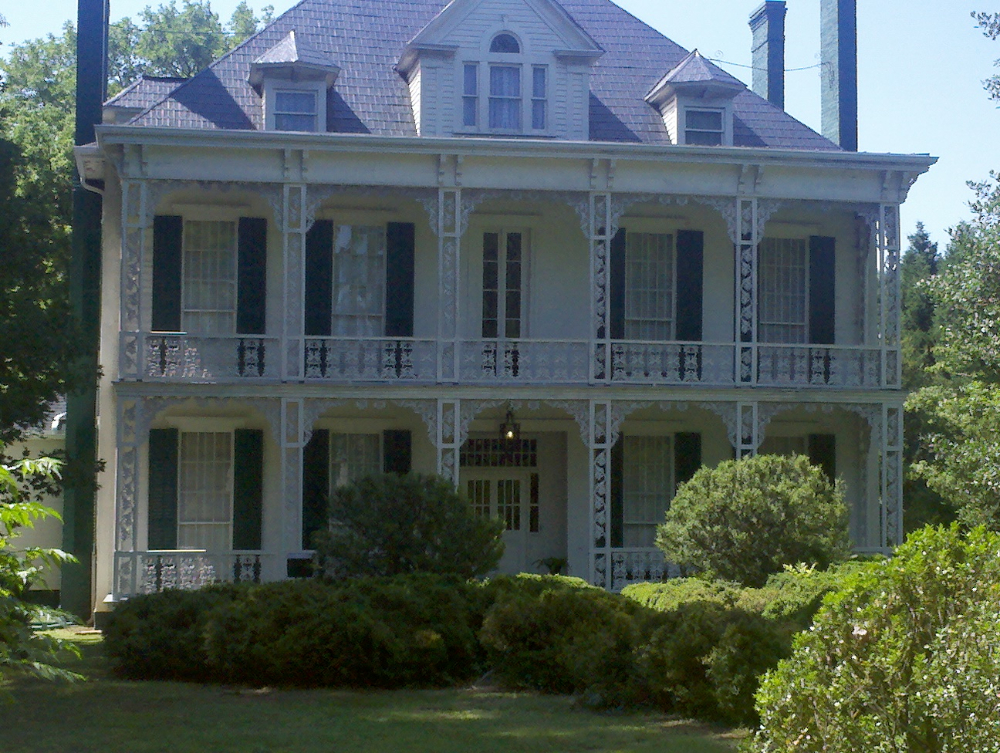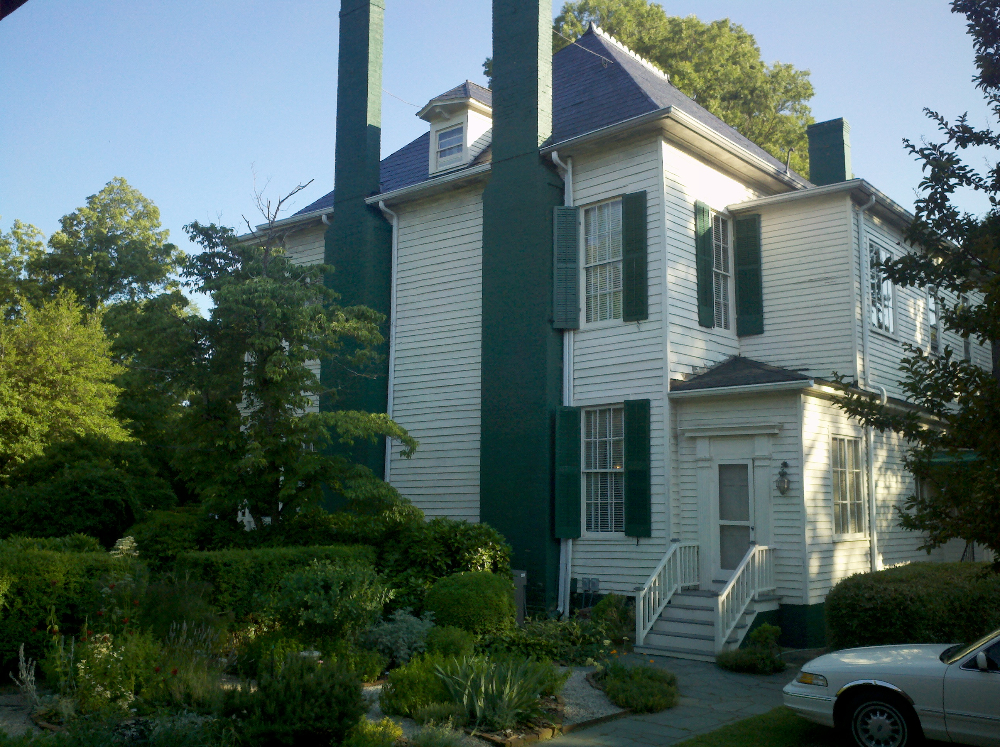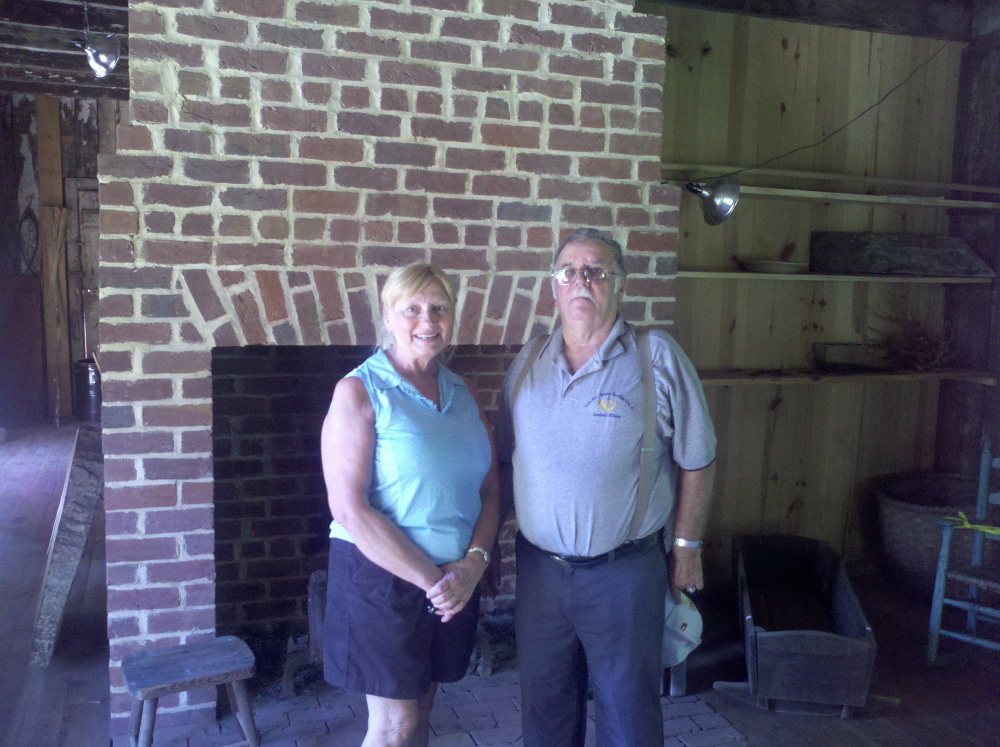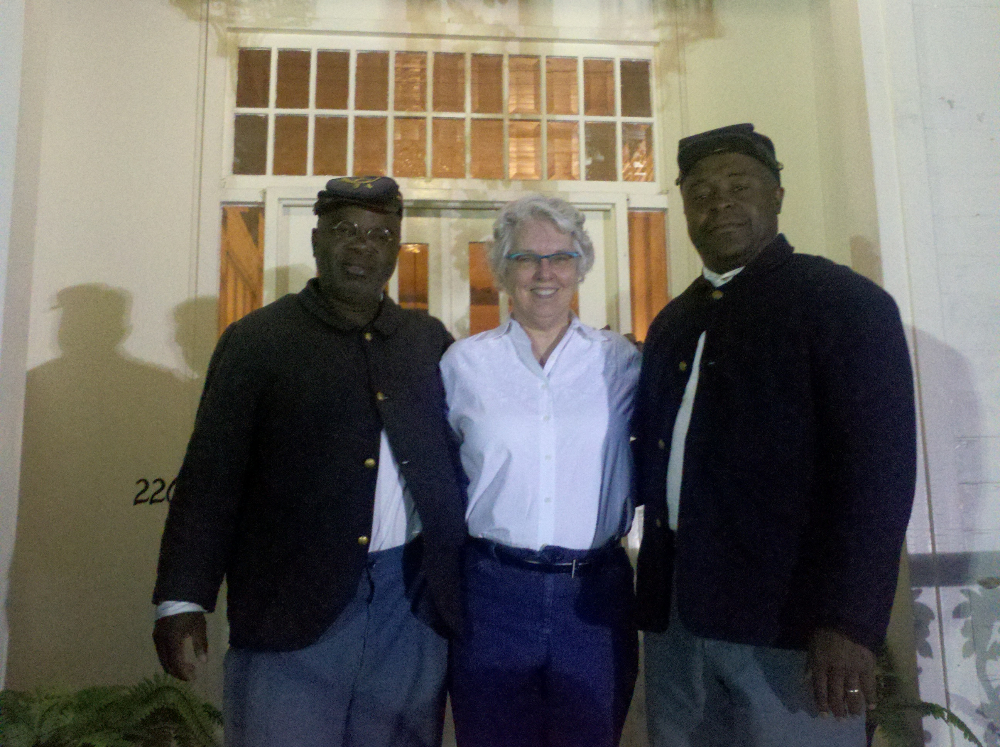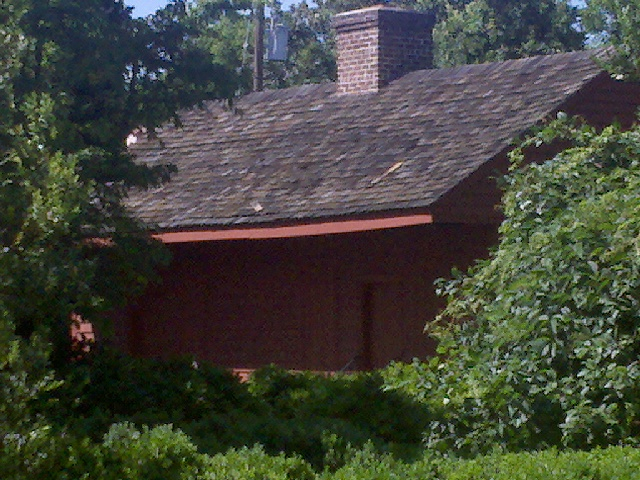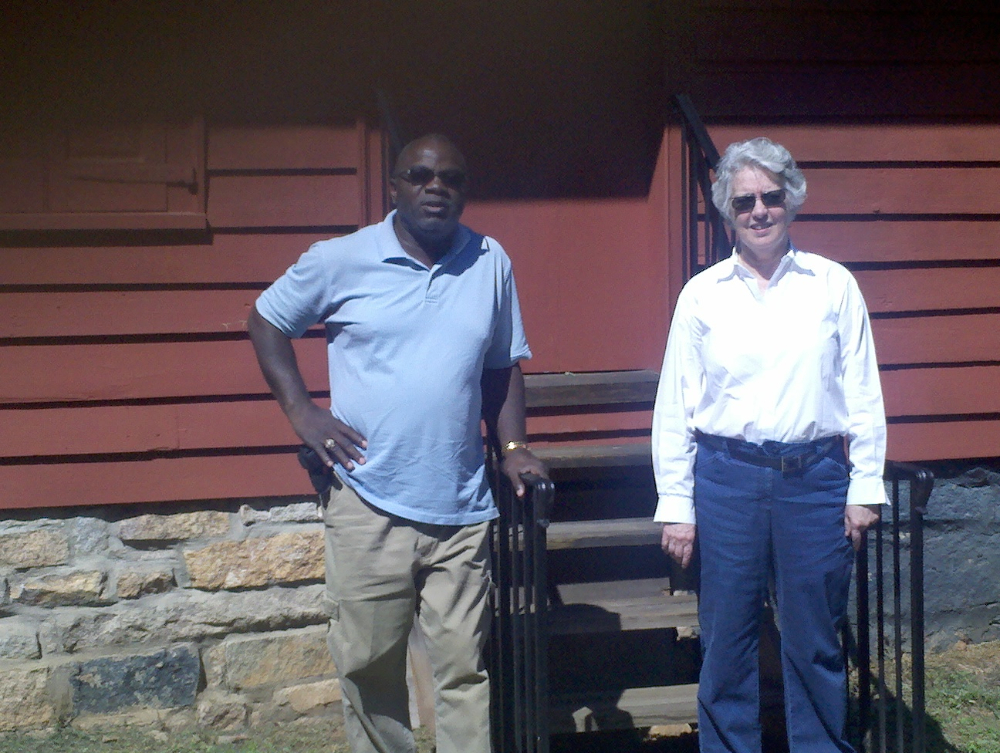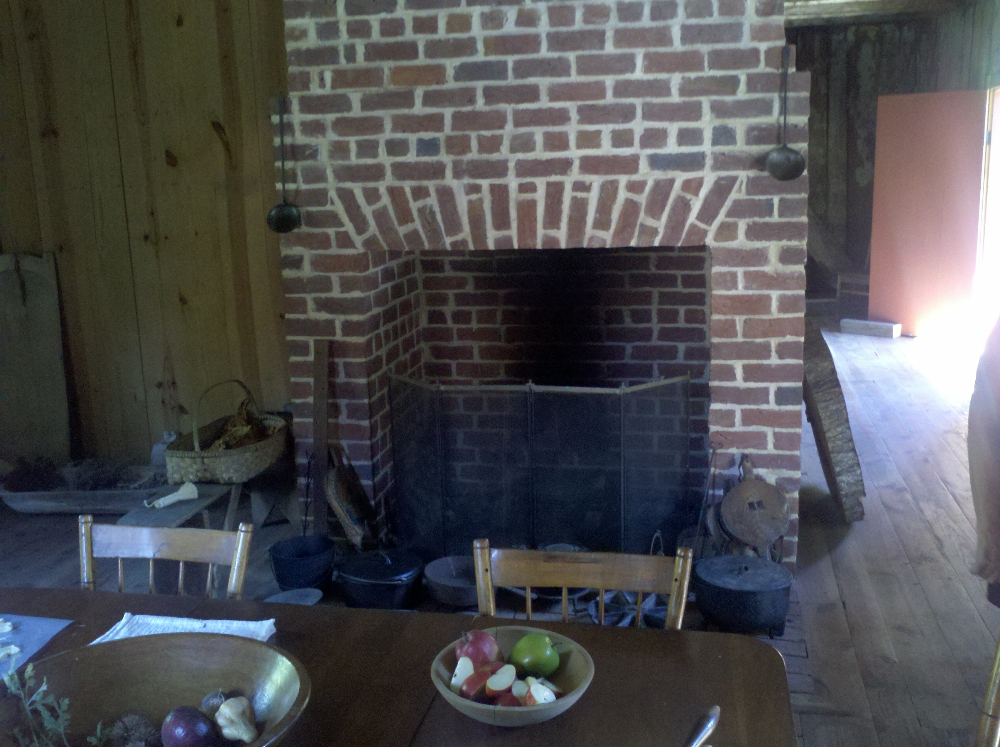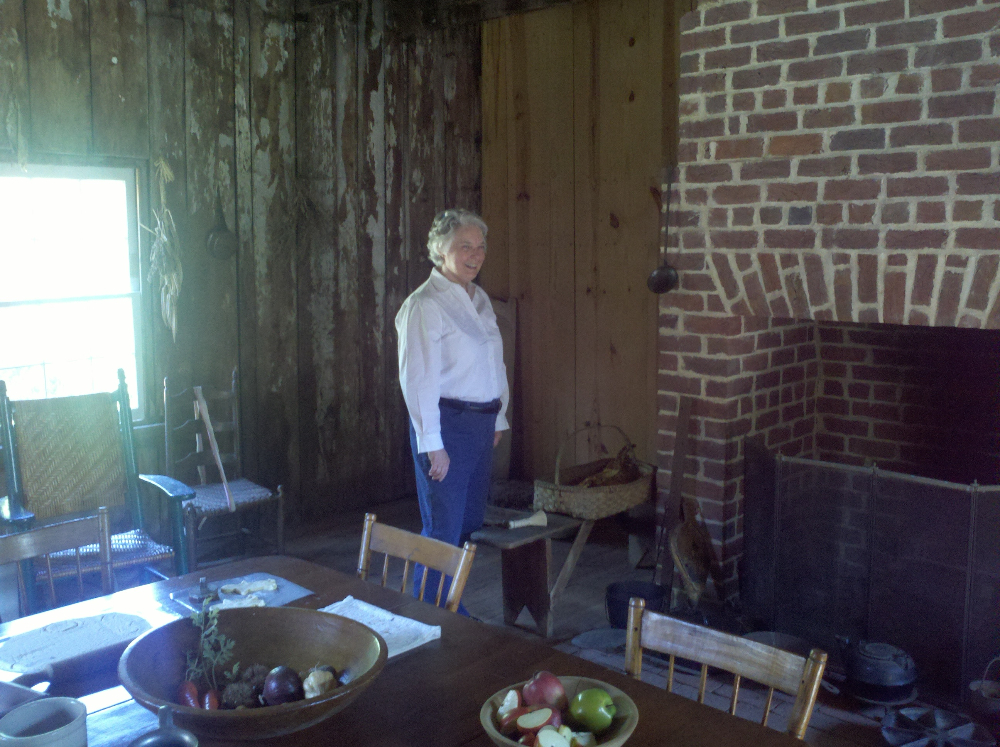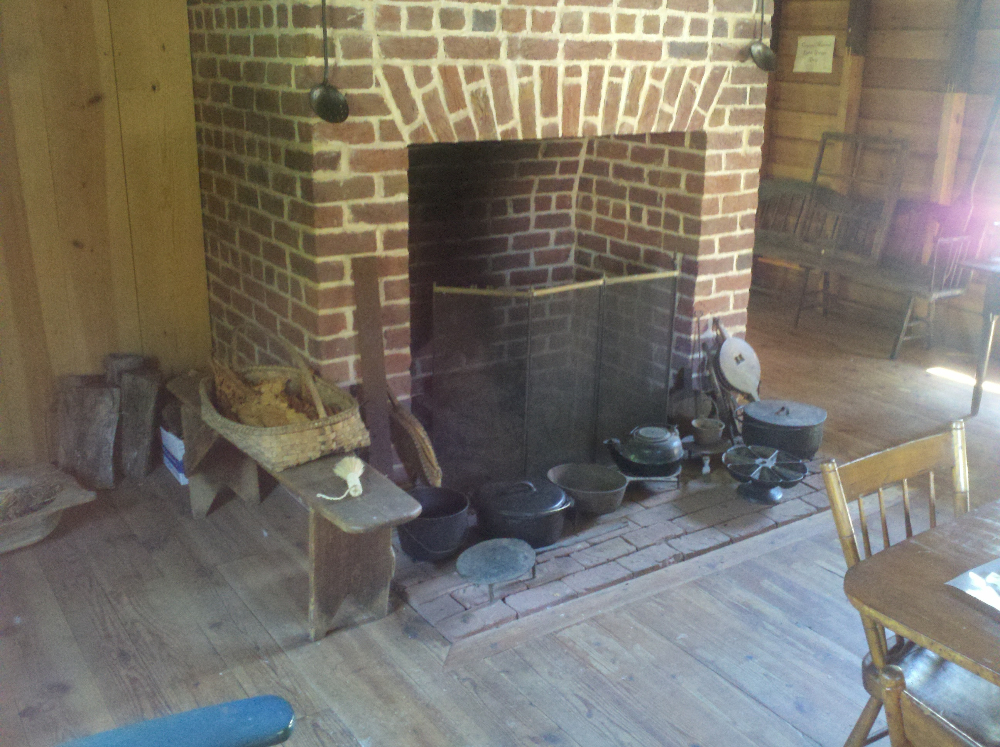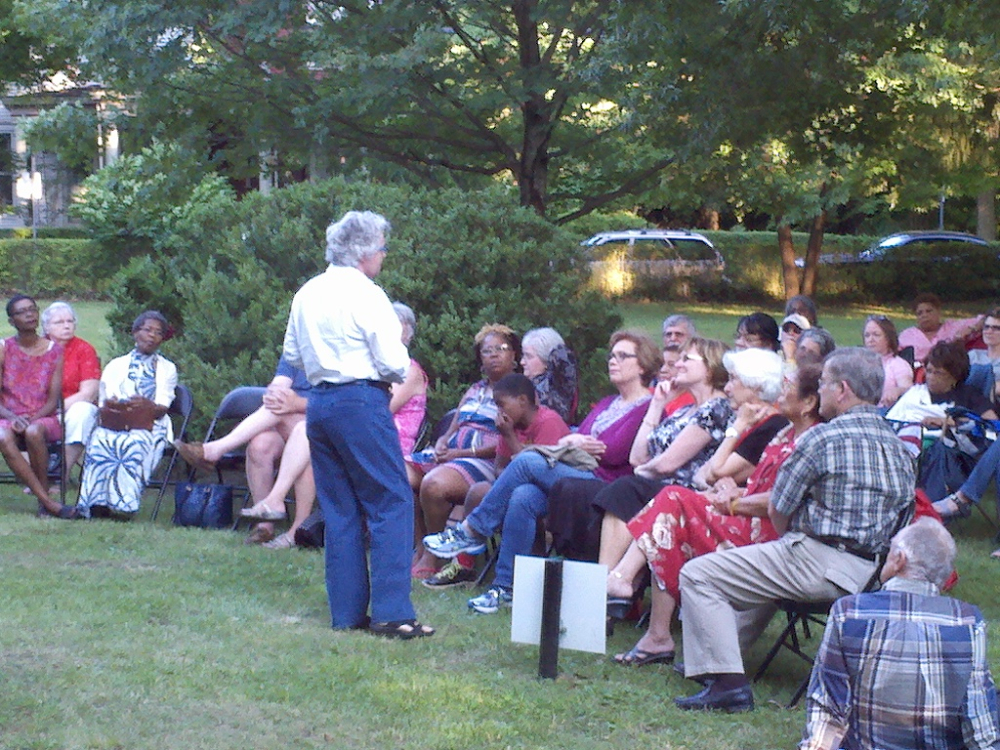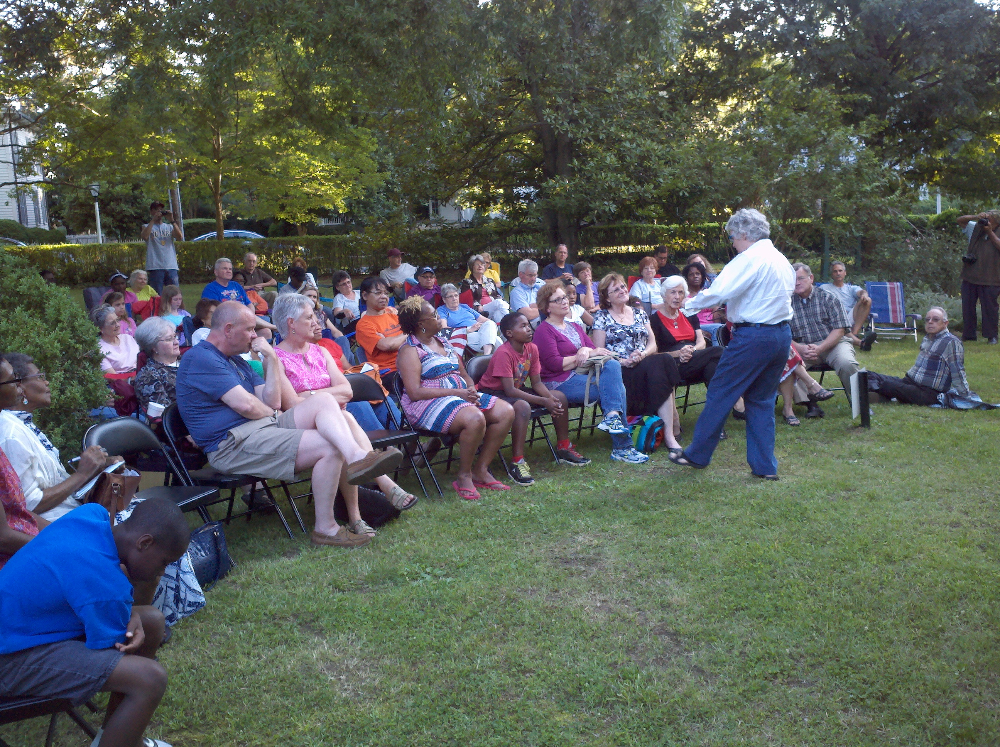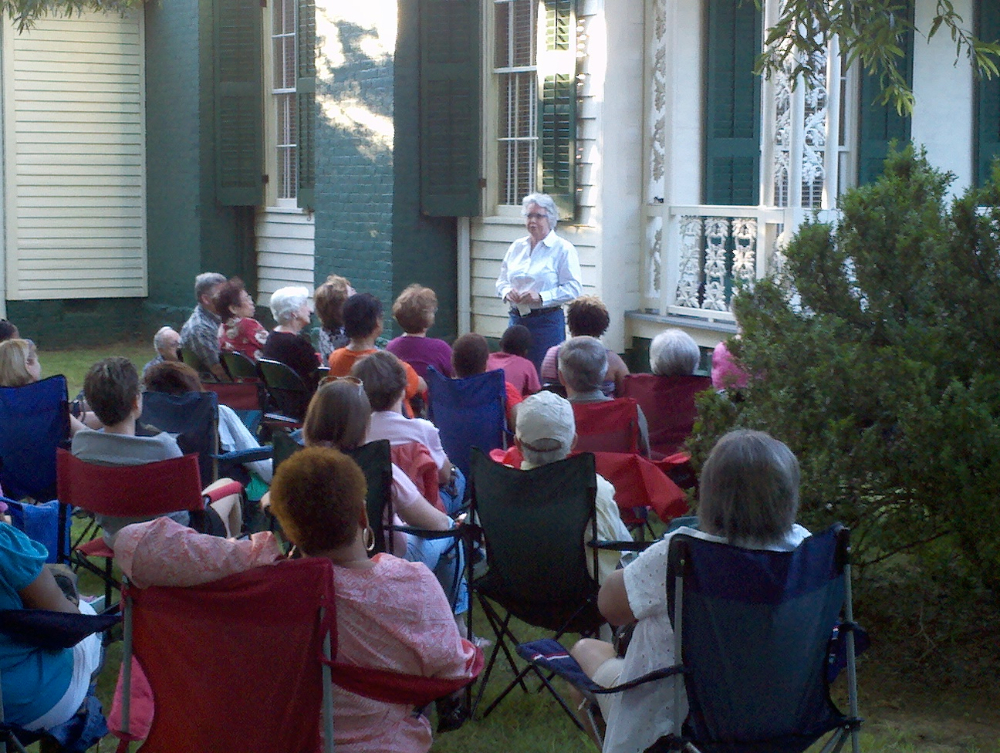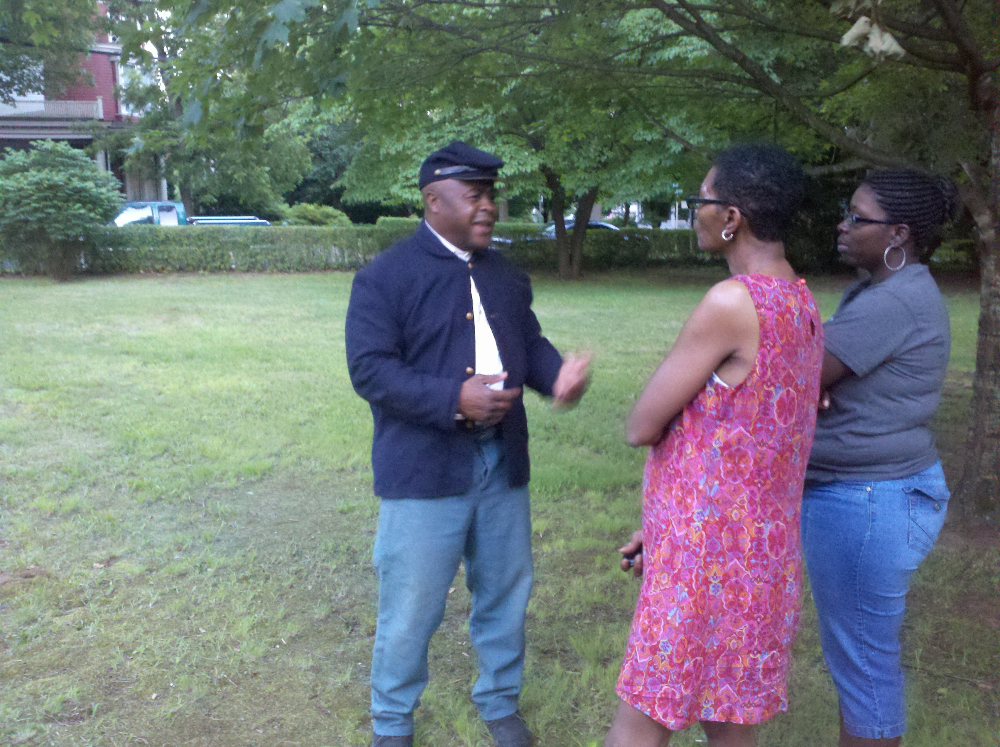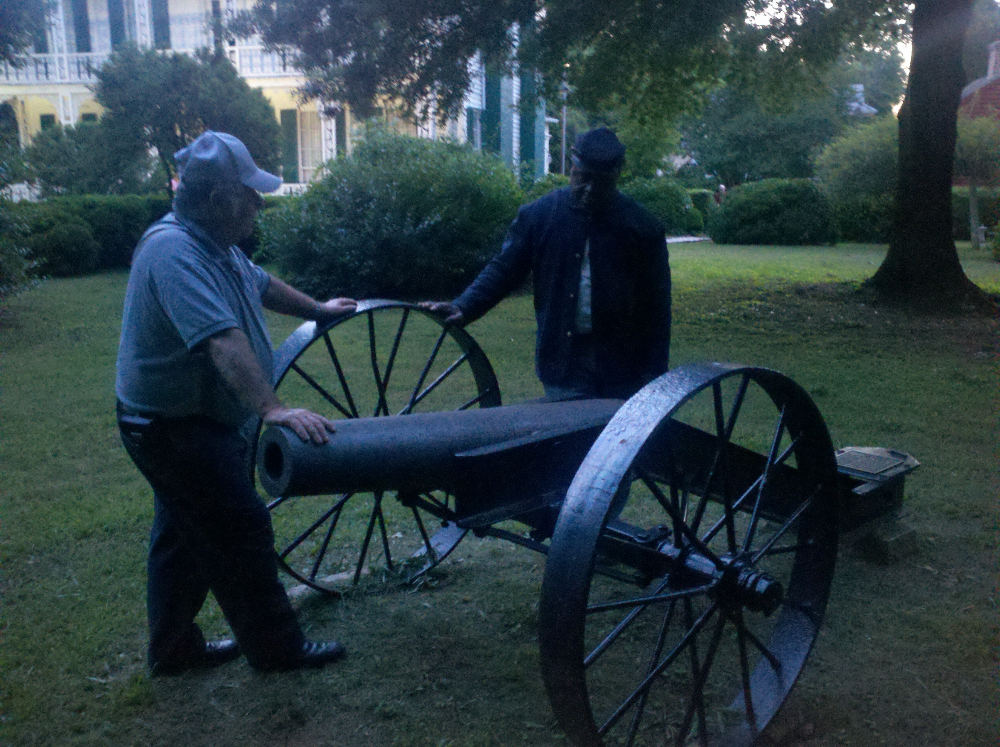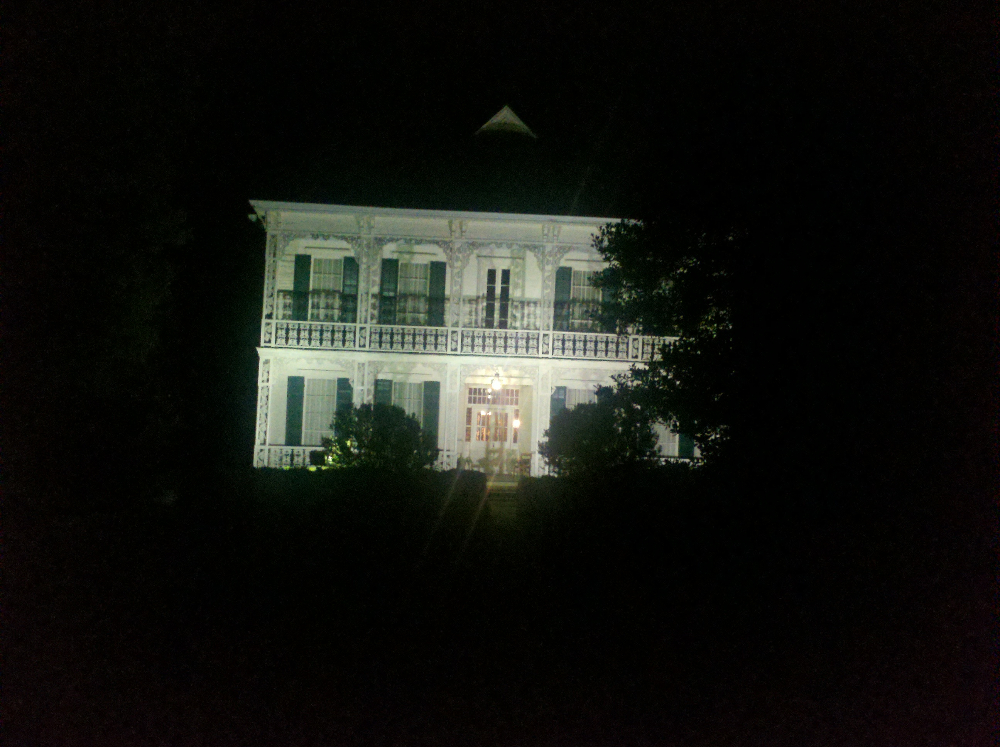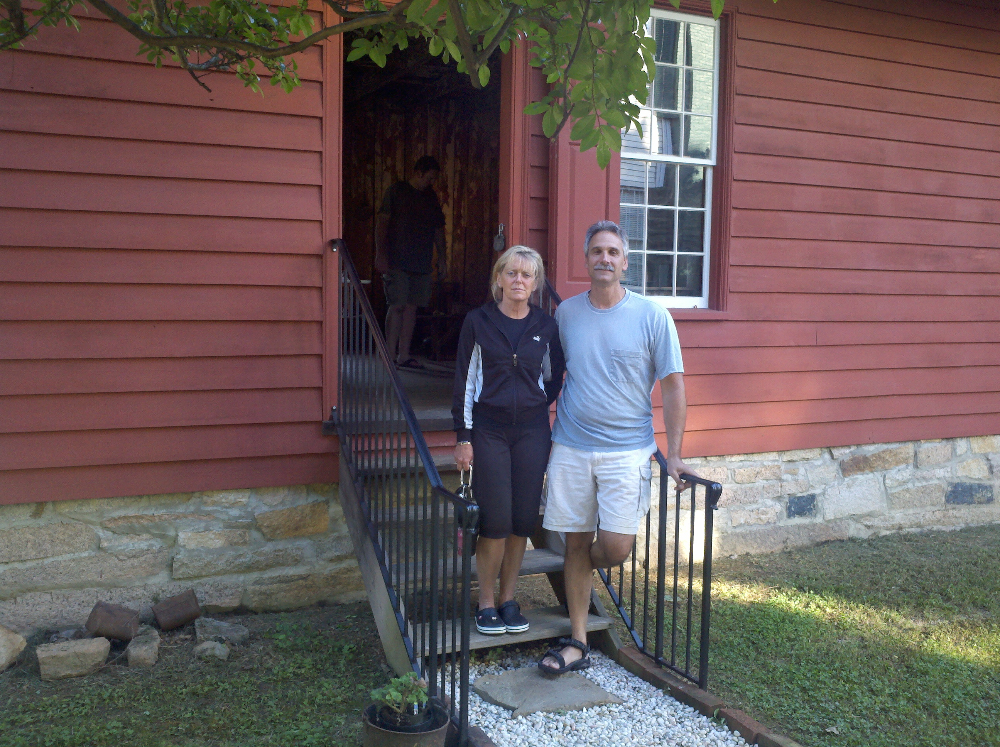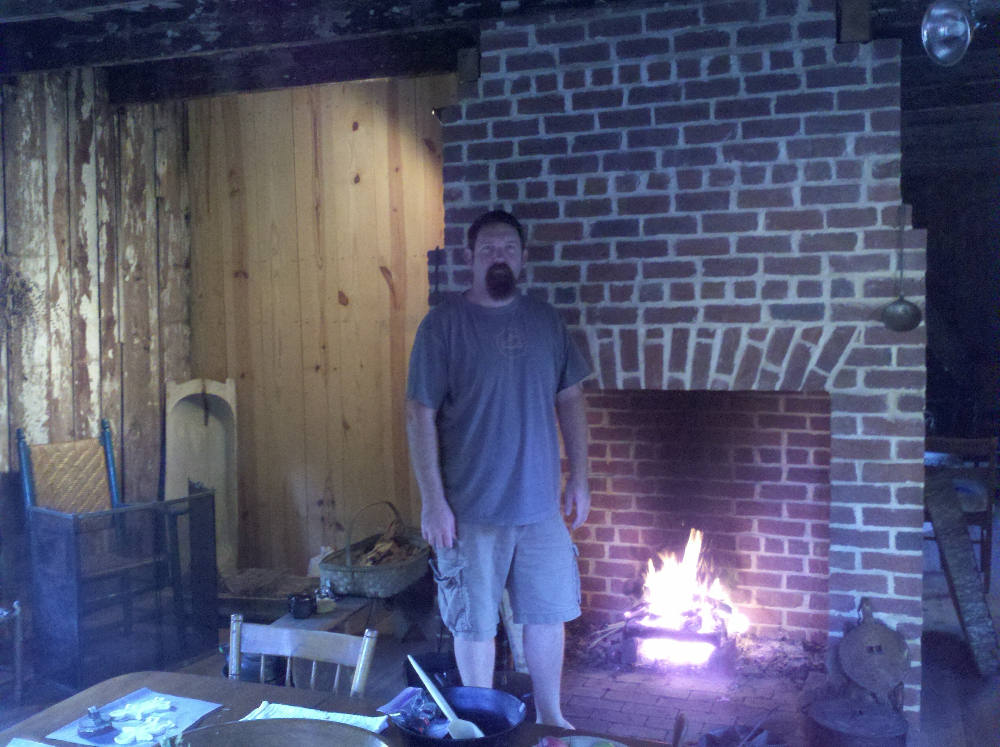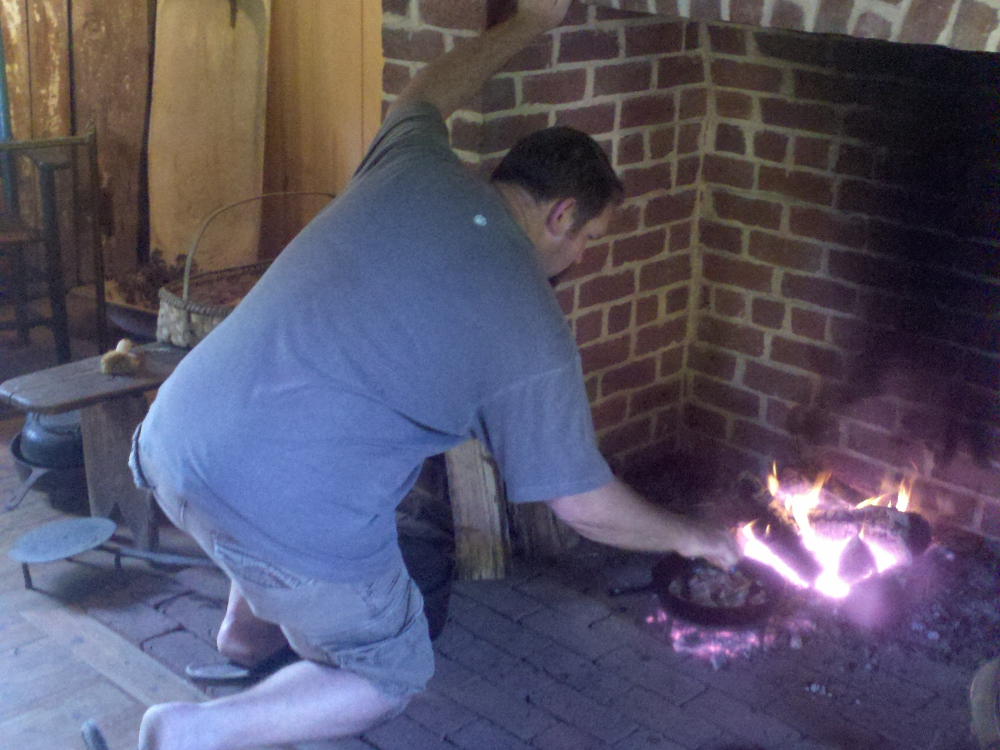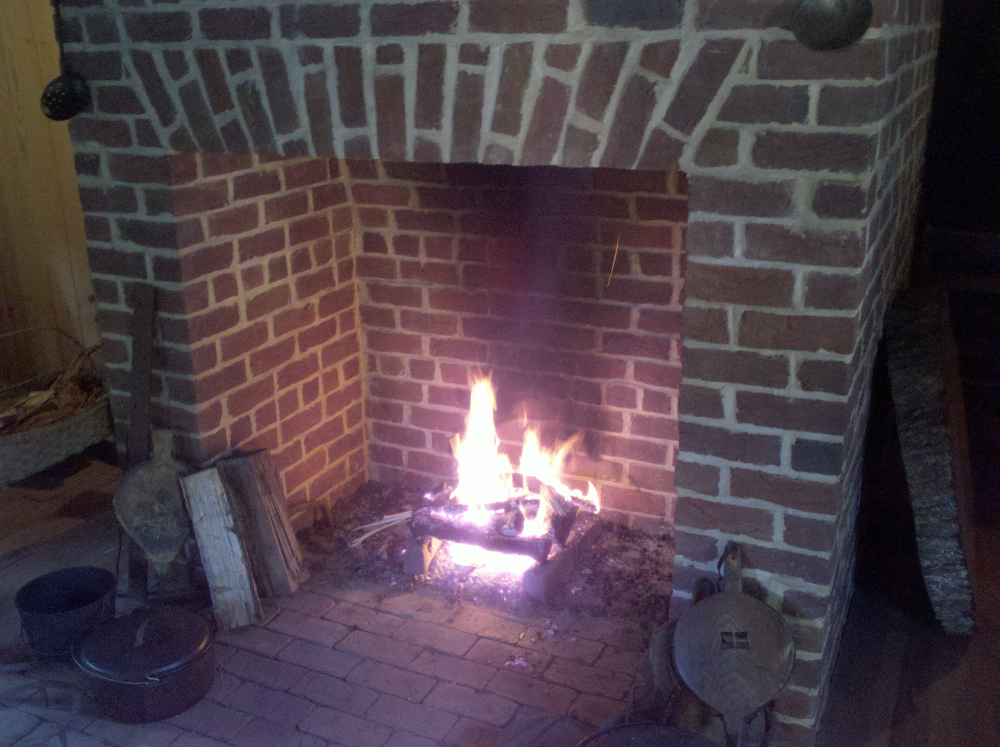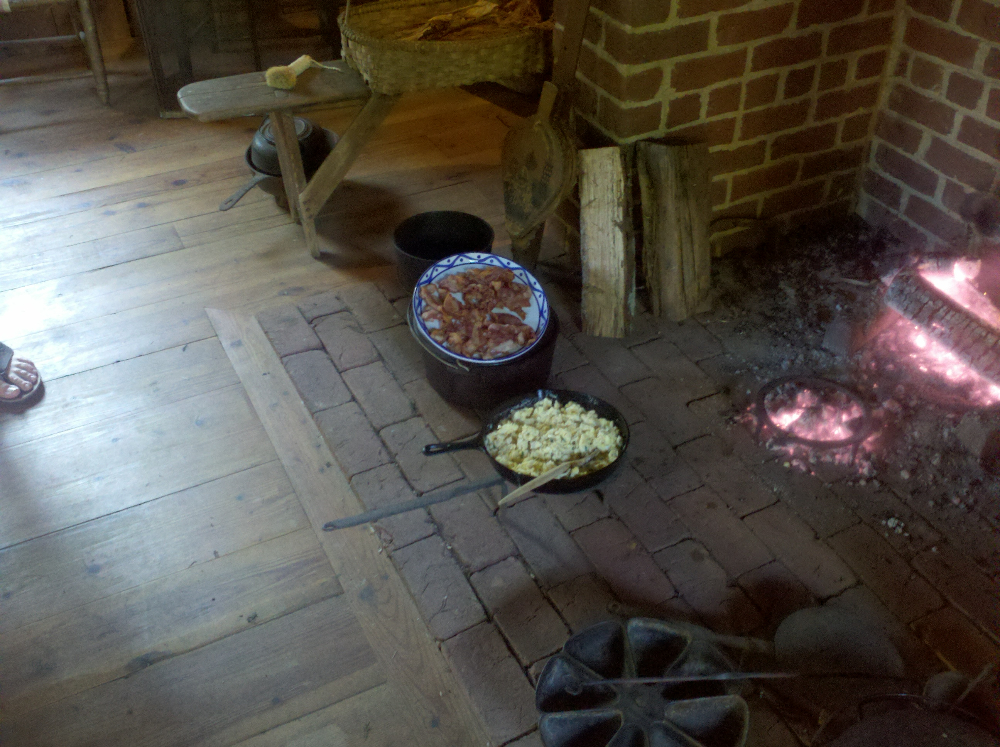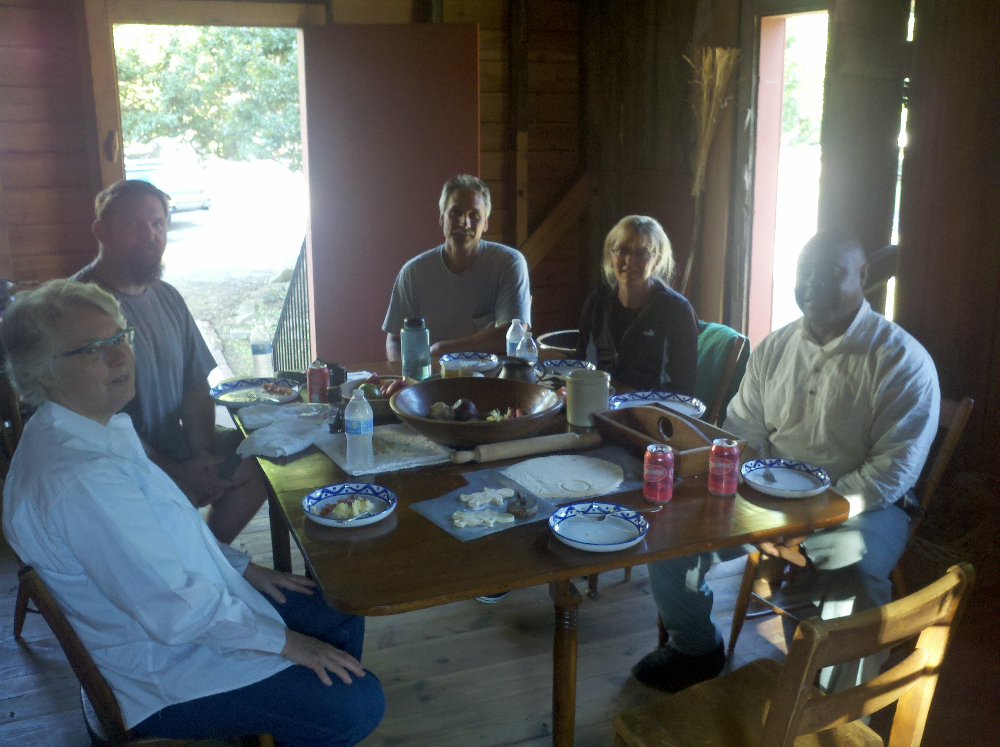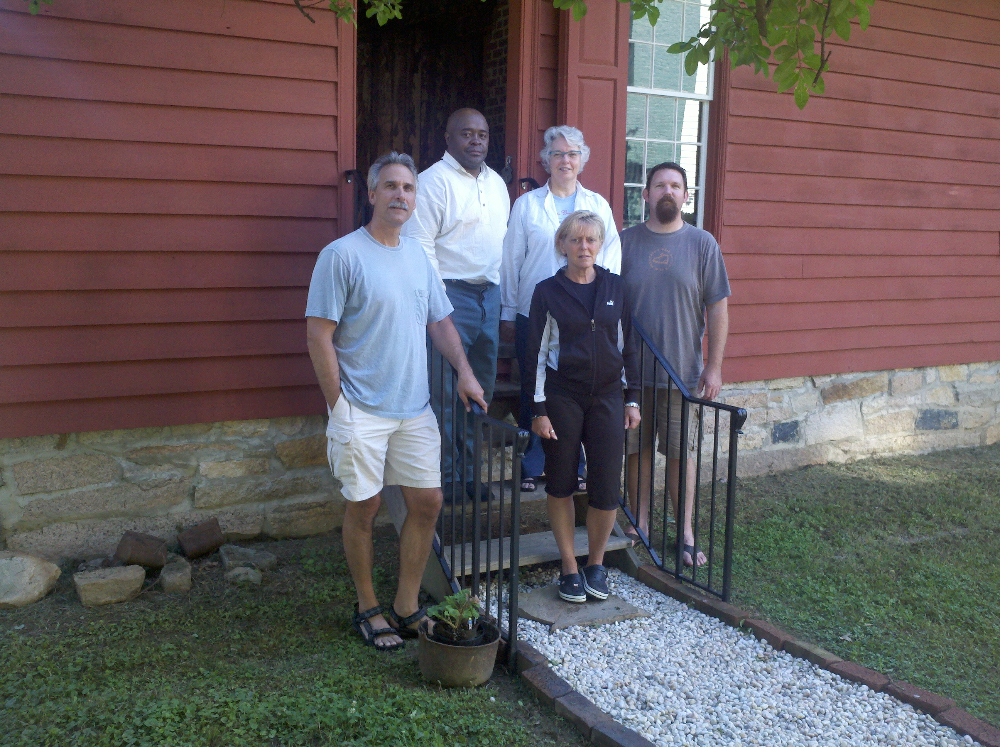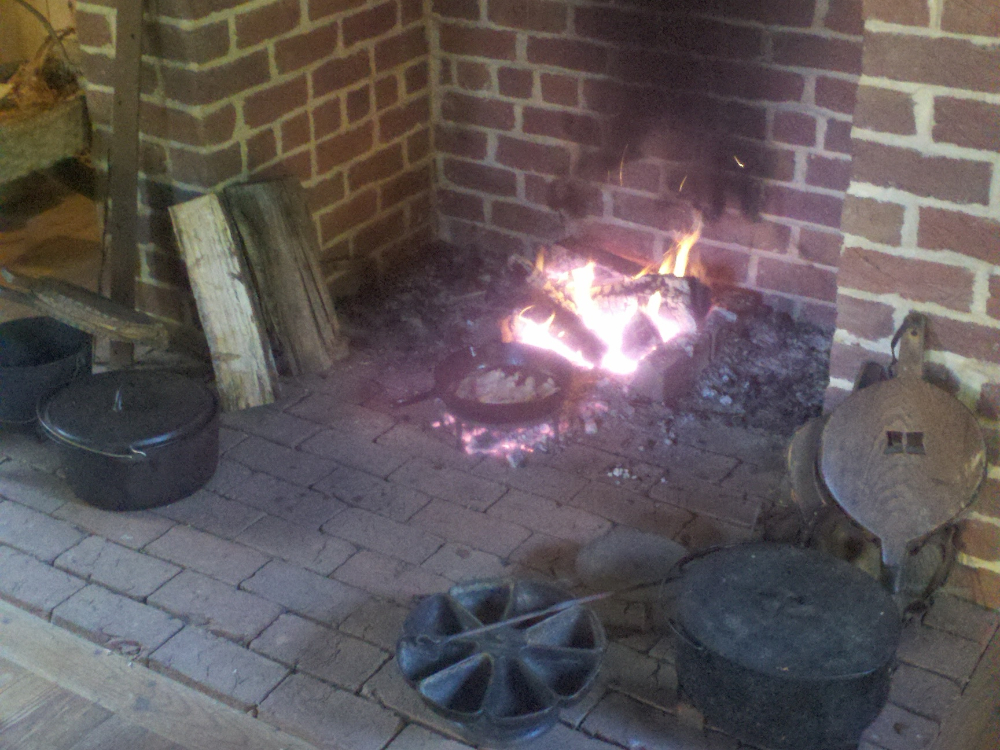As a field officer for the National Trust for Historic Preservation, I have known Brian Davis, the Director of the Historic Salisbury Foundation in Salisbury, North Carolina since he was employed by the Galveston Historic Society in Galveston, Texas. Approximately one year into his current position and when the Slave Dwelling Project was in its infancy, while on a visit to Charleston, SC, Brian made the invitation for me to stay in the slave dwelling at the Dr. Josephus Hall House. At the time of the invitation, we billed it as an opportunity to commemorate Juneteenth because coming from Texas, Brian was quite familiar with the African American tradition of commemorating June 19, 1865 as the day of freedom from the institution of slavery.
As the time for the stay grew nearer, I became a little nervous due to lack of publicity of which I have become accustomed. Brian revealing that he would not be able to attend the presentation because of a conflict was somewhat disconcerting. I was beginning to get the feeling that Brian in his new position had bitten of a little more that he could chew and may have over promised what could be delivered. What I thought I was dealing with I had seen before because there are people who are in positions to make decisions but there are always board members who have the final say. Moreover, I know that the purpose of the Slave Dwelling Project is not palatable to some because it takes them out of their comfort zones. Eventually, some information about the stay did indeed appear on the Facebook page of Historic Salisbury. Additionally, an article on the event did appear in the Salisbury newspaper five days before the event was scheduled to occur.
As a result of the newspaper article, my concerns were compounded when I got a phone call from an African American resident of Salisbury who shall remain nameless. In the nicest way that I can explain, this person was inquiring if I and the project were for real. I received a quick lesson on race relations in Salisbury and was informed that African Americans did not readily interact with Historic Salisbury or any of their activities. Although, I was satisfied in making my request for this person to attend and would be thrilled if this person would convince other African Americans to do likewise, I was not confident that there would be any African Americans at the presentation.
Its website describes The Dr. Josephus Hall House as follows: “Salisbury’s landmark residence was originally an 1820 two-story Federal style double-pile frame house used by the girl’s department of Salisbury Academy. In 1859, Dr. Josephus Hall (1805-1873) added a two-story front porch with cast iron oak leaf and acorn ornamental openwork, a gateway arch, and square-edged clapboard. The front windows were also lengthened. During the Civil War, Dr. Hall served as hospital surgeon and surgeon in charge at the Salisbury Confederate Prison. Between 1890 and 1910, the attic was enlarged with a high-hipped roof and dormers. Historic Salisbury Foundation purchased the home in 1972 from the Hall family, which had continuously occupied the residence for 113 years. The descendants donated the elegant period furniture to the foundation. A two-room detached kitchen, staffed before emancipation by enslaved persons, was carefully restored over a three year period and opened to the public in 2006. The Hall House is individually listed in the National Register for Historic Places.”
When I arrived at the site on Friday, June 14 at the appointed time of 4:00 pm it was a beautiful sunny day which made it perfect for the picture taking that I needed to do. Nestled on a prominent corner well within the city limits of Salisbury, its deep setback from the street gave more than adequate room for its well manicured lawn. That lawn and the house provided many photo opportunities with every step I took onto the property. As I approached the house, the slave dwelling where I would spend the night came clearly into focus for it was located on the right side of the “big house”. Respecting protocol and avoiding the urge to go to the slave dwelling first, I reached the door of the mansion, rang the bell and knocked to no avail. As I was headed to the slave dwelling, I was hailed by someone on the street. The hailer was Prinny Anderson, a descendant of President Thomas Jefferson, who is a member of the group Coming to the Table which provides leadership, resources and a supportive environment for all who wish to acknowledge and heal wounds from racism that is rooted in the United States’ history of slavery. Since meeting Prinny in March of 2012, this would be her third overnight stay in a slave dwelling, her first two were Bacon’s Castle in Surry, Virginia and Laurelwood Plantation in Eastover, SC.
Prinny and I would experience the slave dwelling for the first time together. The red building, which appeared larger than most I had slept in to date, was locked so we had to admire it from the outside. The two front doors were an indication to me that the structure was designed for two families. My prior research revealed that the building was a kitchen for the big house plus living space for the slaves on the property. The building was also relocated from behind the big house to its current location. During its evolution it was once used as a garage.
We were eventually met on the property by Carol Rathburn and Ray Barber who unlocked the building to give us access. Upon entering through the kitchen, I laid my eyes upon a table, chairs and accouterments necessary for cooking which made the space seem cluttered and overly adorned. The other side was more open but also adorned with materials which may not have been in the space when it was inhabited by slaves but, like the items in the kitchen, they could be used effectively for interpreting the lives of slaves. I took the stairs which led up to the attic to peer into the space. The attic spanned the entire length of the building so despite it being an A frame lots of people could spread a pallet and sleep there.
Each overnight stay in a slave dwelling is an opportunity to re-awaken life, bring voices back to the rooms, put food back on the table, and light another fire on the hearth. Each overnight stay in a slave dwelling calls forth stories and images of the ancestors, the ones who lived in these buildings before our visit. Each overnight stay in a slave dwelling reminds a growing circle of people about the ones who were forced into labor in our country, who nurtured their masters’ lives, and who built our society, our structures, and our economy. Sleeping for one night on the floor seems a small act to honor, remember and bring back to life all that those ancestors were as hard working, enduring people and all that they contributed. Won’t you come sleep with history for one night?
A Few Reflections on My Participation in the Slave Dwelling Project on June 14, 2013 – Salisbury, NC
By William Puza
6/19/13 – Today is Juneteenth, and I stand honored to have had the opportunity to commemorate the anniversary by being invited to spend the night of Friday, June 14th in the slave quarters of the Dr. Josephus Hall House in Salisbury, NC. This Slave Dwelling Project raises awareness about the need to ensure that these structures are preserved & restored; they are witness to the important past of African Americans enslaved before the Civil War. On Friday night, the public first heard a fascinating description of the Project by its creator, Joseph McGill, a descendant of slaves, and his colleague Prinny Anderson, herself a descendant of Thomas Jefferson & Sally Hemmings. We were enthralled with the knowledge and insight shared by Terry James of the Massachusetts 54th, the other Project participant. While we heard them talk about their family backgrounds and their work, I started to wonder what I could possibly bring to the discussion that would take place behind the closed doors of the slave dwelling after dark. They are descendants of slaves and of slave owners, and my background is different. I am a descendant of European-Americans who were not slave owners, and who lived in a part of our country seemingly less affected by Slavery. Yet we are all connected, and we are all deeply impacted.
Personal reasons for wanting to stay over at the slave quarters were many, and I jumped at the chance. As a volunteer with HSF, I greatly enjoy working as a docent at the Hall House. Each time visitors came by, I’ve felt troubled by the lack of information that I have, and that I’ve been comfortable sharing, about the kitchen and slave quarters of the house. Human beings, families, men, women, and children LIVED and WORKED there, yet they are not known to us in the same way that the family members from the big house are. To know more about the African Americans who lived there, and to find ways to share that information is both a true objective for me, as well as an obligation. It is the important “rest of the story.”
After the crowd left, we sat for a long time talking on the steps of the Hall House porch. Mr. McGill, Mr. James, and Ms. Anderson told us about their work, told us things we didn’t know about slavery, about what happened after Emancipation, and about the talents, fortitude & inner strength that their ancestors exhibited. Theirs is a history of people brought here against their will, and denied the basic personal rights that give us all hope and the ability to ‘live for the future.’ It’s an eye-opener to learn that the suicide rate among enslaved people was so low. Hopelessness was not prevalent, when it certainly might have been. These lessons are crucial to understanding the American story, with deep and far-reaching implications, just like the strength and fortitude that we know were shown by others in our country’s history — the leaders of the American Revolution, the Founding Fathers, and the immigrants who struggled for acceptance in the 19th and 20th centuries.
When we finally blew out the candles, in the silence of the slave quarters, came one of the most profound parts of the experience for me. In the dark, I could hear the sound of the shackles that Mr. James chooses to wear at night, to authenticate the experience. I remained very quiet, but found myself unable to stop the tears that welled up and eventually began to silently flow. It was important to me that I didn’t make any noise; I was embarrassed by my inability to “control myself,” but even more ashamed, as a student of history, of all that I do not know about Slavery in America. Have you ever thought about the prospect of being shackled before you go to sleep at night?
In the morning, breakfast was prepared on the open hearth & shared by the group. I think I realized that at least we had made a start in bridging the gaps between what we might think we already know, what we maybe have not really wanted to know, and what we actually DO know. For helping with that, I’m grateful to the folks from the Slave Dwelling Project, and to Historic Salisbury Foundation for bringing them here.
Slave Dwelling Project – June 14, 2013 – Brian Davis
As relatively new at the position of executive director for Historic Salisbury Foundation, I am constantly learning more about the history of sites and artifacts in Salisbury and Rowan County, North Carolina. It is amazing that the former kitchen and slave dwelling (1825) at the Dr. Josephus Hall House (1820) survives to this day. This is no-doubt due to its conversion into a garage for automobiles in the early part of the 20th century. Thanks to the generosity of donors and volunteers, the building was restored in 2005 and provided a comfortable stay for the group of six who slept there on the night of June 14, 2013.
I joined the group around 11:15 p.m., as they were making their way back to the slave dwelling from the front yard of the main house. As we settled in, everyone took turns sharing what they expected to gain from the experience. For me, it was a faint glimpse into what it must have been like for the slave families who lived in the structure and how their daily lives unfolded.
What assumptions could I make? I’m reasonably confident that since this was the kitchen, it would have been inhabited by the cook and her family. One side of the building would have been where she and her husband slept, and probably served as the family’s “living room” as we would know it today. Presumably, the children would have slept upstairs in the loft, which is accessible by a narrow stair at one end of the building. The other large room on the ground level would have been used for food preparation for the main house and for meals served to her family. Numerous families would have lived in the building, as both slaves and as freedmen, since its construction.
The 1860 Census lists two slave couples and their children as living on the property, which at that time, would have encompassed the entire city block. Presumably, there would have been several other outbuildings on the land. Research notes that “Aunt Rachel” was the name of the cook featured in a photograph from around 1860, and that she had two daughters, who were house maids. There is still much work ahead to learn about Aunt Rachel and the other families with connections to the former kitchen and dwelling, as well as incorporating the findings into educational experiences for all visitors.
Around 1 a.m., the group of six decided to turn in for the night. I asked whether anyone would like the doors and windows open, thinking it may help keep us cooler in the June evening. Everyone seemed comfortable with having them closed. I brought a sheet and a feather pillow that was my great-grandfather’s as my bedding, and found a spot on the pine plank flooring next to the kitchen table. I woke several times throughout the night, between the feel of the wood floor and the cool temperatures, and was the first to start moving around on Saturday morning. I assembled firewood and kindling, while the others began to stir and started the kitchen fire once more.
With the restored fireplace in the middle of the building, we planned an attempt at preparing breakfast in the former kitchen. After a short time, glowing coals were raked forward from the fire and a small trivet positioned over them. While Peg Puza picked chives from the herb garden at the Hall House and cracked eggs, I fried bacon in a cast iron skillet passed down from my Aunt Carolyn, one of the women who taught me how to cook at an early age. She passed away 9 months ago, and this was the first time I’ve used the skillet – seems like a fitting tribute. With the bacon finished, eggs were poured into the sizzling skillet and quickly scrambled. The welcoming aroma of breakfast – absent from this building for possibly 100 years – returned once again.
The small group gathered around the table and recounted our experiences and observations from the lecture and overnight stay. With each question answered, ten more came to mind. We took one last look around before scattering in different directions, but not before noticing a piece of newspaper from 1879 that had been plastered on the wall, obviously as insulation against drafts. It compared the prices of groceries that year, with the cost of the same items in 1860. It made me think about differences in not only the cost of provisions but also their availability and variety that may have changed in those 19 years as well as the freedoms gained.
A small group touring the house and kitchen later that afternoon, remarked on the smell of bacon in the air and how it really hit home the fact that the building was once used so regularly – serving as a home and as a place where there was always a fire burning and the next meal being prepared.
We are just starting the journey to investigate and interpret this former slave dwelling and kitchen and I hope in the near future, we can do their stories justice.

